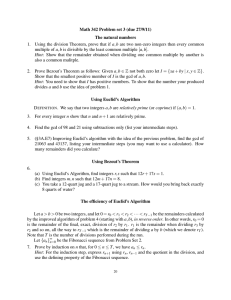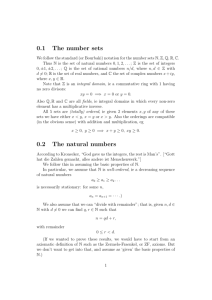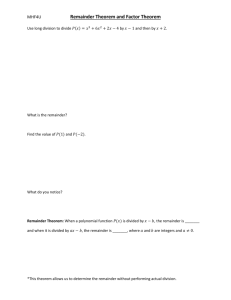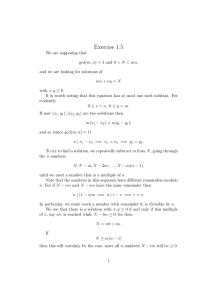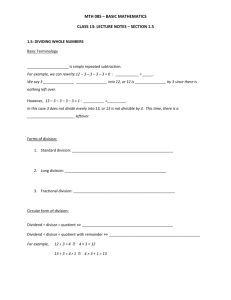Math 342 Problem set 3 (due 26/1/09) The natural numbers 1.
advertisement
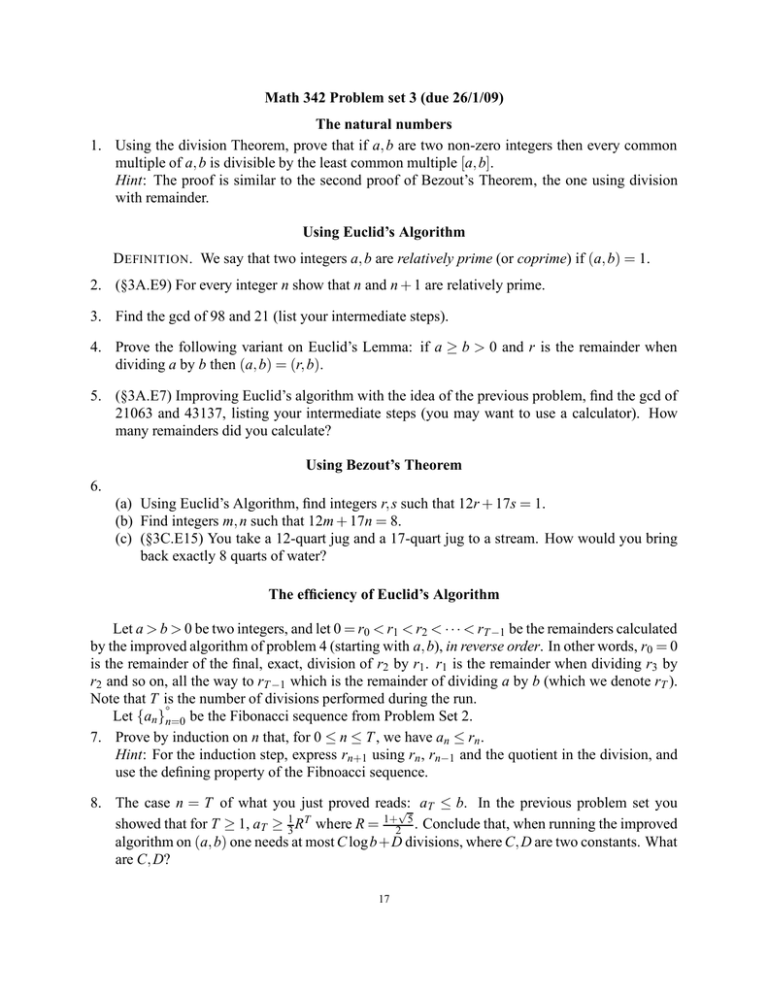
Math 342 Problem set 3 (due 26/1/09)
The natural numbers
1. Using the division Theorem, prove that if a, b are two non-zero integers then every common
multiple of a, b is divisible by the least common multiple [a, b].
Hint: The proof is similar to the second proof of Bezout’s Theorem, the one using division
with remainder.
Using Euclid’s Algorithm
D EFINITION . We say that two integers a, b are relatively prime (or coprime) if (a, b) = 1.
2. (§3A.E9) For every integer n show that n and n + 1 are relatively prime.
3. Find the gcd of 98 and 21 (list your intermediate steps).
4. Prove the following variant on Euclid’s Lemma: if a ≥ b > 0 and r is the remainder when
dividing a by b then (a, b) = (r, b).
5. (§3A.E7) Improving Euclid’s algorithm with the idea of the previous problem, find the gcd of
21063 and 43137, listing your intermediate steps (you may want to use a calculator). How
many remainders did you calculate?
Using Bezout’s Theorem
6.
(a) Using Euclid’s Algorithm, find integers r, s such that 12r + 17s = 1.
(b) Find integers m, n such that 12m + 17n = 8.
(c) (§3C.E15) You take a 12-quart jug and a 17-quart jug to a stream. How would you bring
back exactly 8 quarts of water?
The efficiency of Euclid’s Algorithm
Let a > b > 0 be two integers, and let 0 = r0 < r1 < r2 < · · · < rT −1 be the remainders calculated
by the improved algorithm of problem 4 (starting with a, b), in reverse order. In other words, r0 = 0
is the remainder of the final, exact, division of r2 by r1 . r1 is the remainder when dividing r3 by
r2 and so on, all the way to rT −1 which is the remainder of dividing a by b (which we denote rT ).
Note that T is the number of divisions performed during the run.
Let {an }∞
n=0 be the Fibonacci sequence from Problem Set 2.
7. Prove by induction on n that, for 0 ≤ n ≤ T , we have an ≤ rn .
Hint: For the induction step, express rn+1 using rn , rn−1 and the quotient in the division, and
use the defining property of the Fibnoacci sequence.
8. The case n = T of what you just proved reads:
√ aT ≤ b. In the previous problem set you
1 T
1+ 5
showed that for T ≥ 1, aT ≥ 3 R where R = 2 . Conclude that, when running the improved
algorithm on (a, b) one needs at most C log b+D divisions, where C, D are two constants. What
are C, D?
17
Solving congruences
9. For each a ∈ {0, 1, 2} find all x ∈ Z such that x2 leaves remainder a when divided by 3.
Hint: first show that the remainder of x2 only depends on that of x, and then divide into cases
based on the latter remainder.
18
